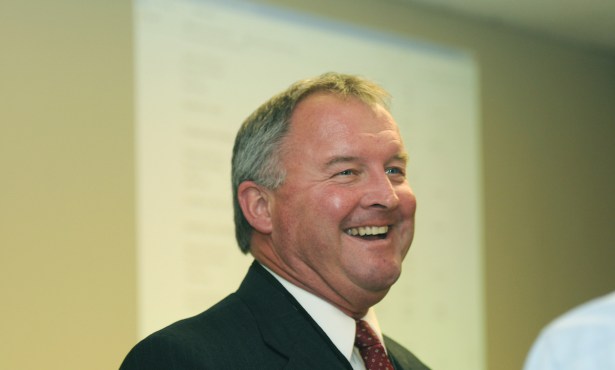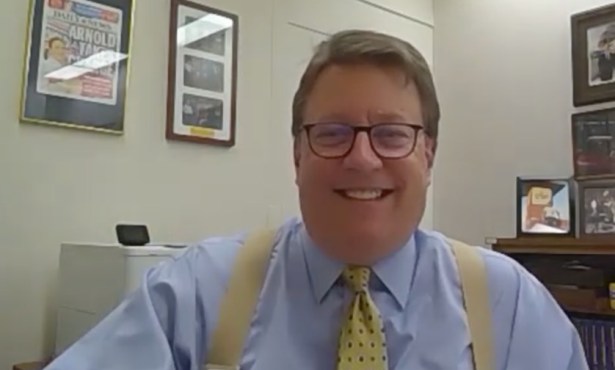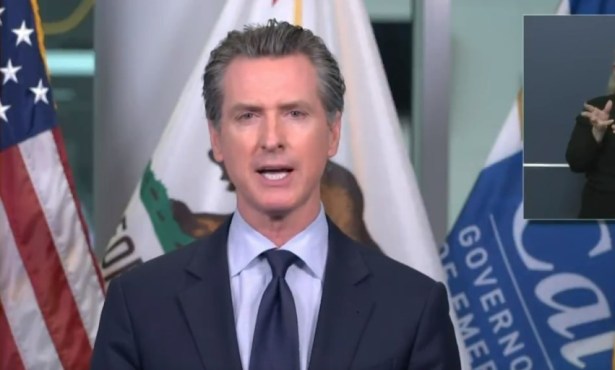Keeping Representative Walter Capps’s Legacy Alive at UCSB
What Would Walter Do?

On Tuesday afternoon, October 28, 1997, Professor Richard Hecht, a Judaic scholar and chairman of UCSB’s Religious Studies Department, took an emergency call from the university’s news office. “They told me Walter Capps had died,” he recalled the other day, speaking softly in his book-crammed campus office.
Hecht, wearing a yarmulke and wire rims, paused a moment in recounting the story, gaze retreating inward.
“The next thing I knew, I had this oxygen mask on, lying on the floor, and this fireman was looming over me,” he said. “It was a devastating event for me, for the department, and for the community.”
Hecht’s blackout that afternoon underscored the depth of shock that rocked the Central Coast as word spread about Capps, then Santa Barbara’s 63-year-old freshman congressmember and long its leading public intellectual. Tall and thin, he suffered a fatal heart attack at Washington, D.C.’s Dulles Airport.
Within hours, colleagues on both coasts, in the university and in Congress, began to discuss a memorial to Capp’s legacy. Now, in 2008, it is manifest in UCSB’s Walter H. Capps Center for the Study of Ethics, Religion, and Public Life.
As an edifice, the Capps Center is underwhelming-a couple of offices in the humanities building, one with a plaque on the door. As an effective enterprise, however, it is far more impressive. Since its formation in 2002, it has built a $2 million endowment to promote Capps’s brand of scholarly idealism, which evolved throughout the decades into a kind of intellectual populism. The center continues Capps’s work to renew civic debate and expand political participations by lowering barriers between the university and the community.
A good example of this is one of the center’s current projects to develop an internship program that would sponsor UCSB students to work in a service learning program at various Santa Barbara nonprofits. “Walter didn’t like walls around the classroom,” said Representative Lois Capps, who was first elected to Congress to fill her husband’s seat after his death. Now in her sixth term, she remembered how “Walter wanted the doors and windows open. He liked to get out in the community.”
During the next several weeks, the center’s visibility will be high, as it sponsors a series of public events and academic activities that exemplify Walter Capps’s legacy:
• On April 13, corporate whistleblower Cynthia Cooper, who played a key role in uncovering financial chicanery at WorldCom, will deliver the center’s annual Henry A. Schimberg public lecture on applied ethics. Schimberg, a Santa Barbara resident and former CEO of Coca-Cola Enterprises, has also endowed (through the center) UCSB’s only class in applied ethics, where students will meet with Cooper the following day.
• On April 26, the center will host a reunion for students who took Walter Capps’s famous Religion and the Vietnam War class. In the 16 years he taught the class, more than 15,000 students took it, packing into Campbell Hall to hear personal narratives from people on all sides as part of an exercise in public reconciliation and healing.
• May 9-10, national scholars will come to Santa Barbara for a two-day conference, Exploring the Contributions of Walter Capps to the Study of Religion, which aims to examine the pioneering work of Capps, whose research, teaching, and writing helped define the field of religious studies.
“Walter had a strong conviction that a public university should reach the public,” said Professor Wade Clark Roof, the driving force and director of the center. “He inspired a lot of people because he exuded what it was that he preached-that you as an individual can make a difference, you can do a lot, and there’s no telling what you can do if you set out to do it.”
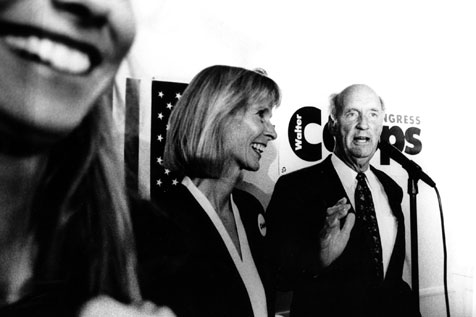
Tuba-Toting Professor
Walter Capps loved to play the tuba. He started in the high school marching band in Nebraska, and he never stopped. He played at his church and in parades on State Street. He tied it to the top of the family car while driving cross-country on sabbatical, and he played it at home, at the end of dinner parties filled with crackling conversation, colleagues, scholars, and students.
“Walter had a whole group of students who flocked to him,” recalled Hecht, who studied with Capps before later joining the faculty. “Conferences would end with dinner at the Cappses’, and those would end with him playing ‘Asleep in the Deep.'” This zest for the tuba illustrated to his friends and colleagues his intense commitment to all aspects of his rich and unpredictable life.
Walter and Lois Capps came to UCSB in 1964. A scholar of European Christian theology, with a PhD from Yale Divinity School, Capps was the second fulltime faculty member in what became one of the top religious studies departments in the nation. He helped to define the academic field at a time when it was in great flux because of a 1963 landmark U.S. Supreme Court decision, Abington Township School District v. Schempp (374 U.S. 203), in which the court found school-sponsored Bible readings in public schools unconstitutional. “The study of religion ‘formally’ began with the U.S. Supreme Court decision, which allowed the teaching about religion in public universities, colleges, and schools,” Roof and Hecht wrote in a Capps Center proposal. “In those early years : there were substantial confusions about : the differences between theological studies and religious studies,” they wrote. “We were able to avoid that confusion through the guidance of Capps and others : [which] gave our department a two-decade jump” in developing the field of study.
The intersection of religion and public life remained a theme of Capps’s academic work, as a researcher, teacher, and author, for three decades. Among his noted writings are Religious Studies: The Making of a Discipline and The New Religious Right: Piety, Patriotism, and Politics, one of the first studies of the Christian conservative movement.
Capps’s reputation as a master teacher rested upon two courses he taught for many years. He based both on real-life narratives from real people, echoing his often stated belief that “politics is born in a conversation.”
During the 16 years he taught the Vietnam course, veterans, widows, antiwar activists, and political figures-including former senators Bob Kerrey and George McGovern-offered perspectives on the war. Another course, Voices of the Stranger, whose title is based on a work by the Trappist monk and writer Thomas Merton, brought in speakers to talk about how they overcame huge obstacles in their lives. “Walter conceptualized these courses theologically,” said Hecht. “He said the Vietnam course was the crucifixion and Voices of the Stranger was the resurrection.”
Capps found a splendid example of his vision of politics shaped by moral and philosophical beliefs in the Czech poet-politician V¡clav Havel. In a paper published shortly before his death, Capps noted approvingly that the Czech leader “mixed keen interest in theory and unfailing commitment to scholarship with dedicated involvement in direct political activity.” The paper, Interpreting V¡clav Havel, helped explain why Capps chose to run for Congress, a move that surprised colleagues and family.
Mr. Capps in Washington
In 1992, politics roiled in the Central Coast’s 22nd Congressional District. Longtime representative Robert Lagomarsino, a moderate Republican, had been ousted by arriviste Michael Huffington, who spent millions of his own money to defeat the incumbent. After one term, in 1994, Huffington abandoned the seat to run for U.S. Senate. Capps, then the chair of UCSB’s religious studies department, decided to run for the open seat, campaigning as a liberal Democrat against Andrea Seastrand, a conservative Republican.
Capps’s senior strategist was Bill Carrick, a hard-boiled veteran of political wars who had worked for Ted Kennedy, Dick Gephardt, and Dianne Feinstein, among others. It is hard to imagine two characters more disparate than Capps and Carrick. “My relationship with him as a political consultant was different than anyone I’d ever worked for,” Carrick drawled, with typical understatement. “He wanted to talk through everything, and he wanted to understand everything.”
The 1994 race took place amid the historic Republican takeover of the House, as Newt Gingrich and his “Contract with America” led to a GOP congressional landslide. Despite a thoughtful, thoroughly unconventional stump style and a series of slashing attacks by his rival, Capps ran well, losing by just 1,600 votes in a Republican-leaning district in a Republican year.
He immediately started running again.
“Walter loved the idea of representative democracy, the idea that someone could come from the community who wasn’t a career politician, who could represent his friends and neighbors back in Congress,” Carrick recalled. “And he said, ‘Maybe I can make a little bit of difference, and change the tenor of the discourse in politics.'”
The 1996 race was a slugfest, with national Republicans pouring money and personal appearances into an effort to hold the seat and the AFL-CIO funding an independent media campaign on behalf of Capps. The low point came with a right-wing attack ad showing separate photos of Capps and Richard Allen Davis, the killer of teenager Polly Klaas, which excoriated Capps for his stance on the death penalty. “But Walter was authentic and real, and he talked to everybody, and everybody liked him, even if they disagreed with him,” said Carrick. Fueled by labor’s ads and an army of volunteers, many his former students, Capps prevailed.
In Washington, the oldest freshman in the congressional class of 1996 made an immediate impression on many, regardless of ideology. “There are a lot of freshman congressmen, and most people don’t know the difference between them and the elevator operator,” said Carrick. “But everyone knew Walter, and everyone loved him.”
After his death, 80 House colleagues, from both sides of the aisle, attended a memorial service at the Santa Barbara Mission, where mourners spilled out of the church and onto the lawn. At a later service in Washington, D.C., then-president Bill Clinton eulogized Capps.
“So I met this guy,” Clinton recalled of a campaign appearance at City College in fall 1996, “and I thought-this man is entirely too nice to be in Congress. : He believed in his party, but principles were more important. He liked victory, but values were more important. And he knew that the mind was a wonderful thing, but the heart was more important. : He was an instant and consistent rebuke to the cynicism that some people try to make their way with in this day and age, especially when they talk about the political system.”
Building the Center
It took until January 2002 for the Capps Center to be established formally. Roof, a sociologist who came to UCSB in 1989 and won national attention for his research on the spiritual behavior of baby boomers, became its director.
What got the project going was a $500,000 grant from the Department of Education, a federal budget earmark that in 2001 won unanimous, bipartisan approval of Capps’s California colleagues in Congress. Adding a $100,000 grant from the UC President’s office, the center began sponsoring programs in downtown Santa Barbara, featuring notable speakers like the author Garry Wills, the anti-death penalty activist Sister Helen Prejean, and the religion journalist Gustav Niebuhr.
Roof scored a fundraising coup in 2002, when the National Endowment for the Humanities (NEH) approved his challenge grant proposal and awarded the center $500,000 on condition that it raise another $1.5 million.
The NEH application sets forth the ambitious vision for the center, invoking several top religious study facilities in the east and Midwest, at Trinity and Boston colleges, and at the University of Chicago. “On the West Coast, there is nothing quite comparable,” Roof wrote. “The Capps Center will become a model for public outreach at a time when new models are much needed. : [It] will link the academic resources of [UCSB] and the larger Central Coast community, both in its campus and off-campus programs, and extend visibility to the basic principle that humanities-based programs belong to the people.”
The grant gave the center five years to raise the $1.5 million. They did it in four, thanks to local donors, many of whom knew Walter and Lois Capps personally, including Sara Miller McCune, Steve and Barbara Mendell, Lillian and Jon Lovelace, Gary and Mary Becker, Eulah Laucks, and Henry Schimberg, among others.
In mid 2006, the center announced the establishment of a $2 million endowment.
“Astonishingly, we not only met the match but exceeded it,” recalled Leonard Wallock, associate director of the center. “What was most remarkable was that this wasn’t a nonprofit with a long history that was being funded-it was an idea.”
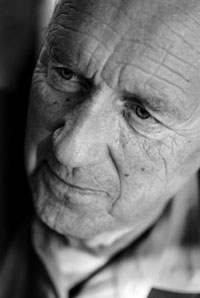
Ethically Money
There was one unexpected obstacle to meeting the fundraising goal-the name of the Capps Center.
In 2005, the Board of Directors quietly approved a change, inserting the word “ethics” into the original title, the Walter H. Capps Center for the Study of Religion and Public Life. The minor change spurred new donations.
“There’s a problem with religion,” said Roof. “The public saw the word ‘religion’ and said, ‘What exactly do you mean?’ Adding the word ‘ethics’ up front made our title a little long,” he added, “but we also discovered the word ‘ethics’ would raise more money.”
Among the large donors is Schimberg, the former head of Coca-Cola Enterprises. As CEO of Coca-Cola, he was celebrated in the business press as an innovative leader who boosted sales by transforming his company’s moribund culture. He also faced a number of ethical battles, including major controversies about Coke’s plant in Colombia, health issues, and environmental packaging.
“What really got me going [in support of the Capps Center] was that ethics in graduate school was taught as a compliance course-how far can you push it without going to jail or seeing the IRS,” Schimberg said. “With all the things that were happening-from Iraq to Enron-I started talking about grounding undergraduate students with some level of ethical sensibility. It was not being done, and if it was being done, it was not being done in an adequate manner.”
Schimberg made a six-figure donation to endow an annual lecture about ethics by a prominent national figure. It also funds Ethics, Enterprise, and Leadership, a popular undergraduate course that includes ethical case studies drawn from the business world.
“Our biggest business scandals were all engineered by graduates of top business schools,” said Professor Laurie Harris, a lawyer and specialist in corporate ethics, who teaches the course. “It’s important to teach the notion of applied ethics, and how to wrestle with ethics on a personal level.”
Among its various other programs, the center also provides graduate fellowships and undergraduate internships to students to work for state and federal lawmakers. The newest program is the planned intern partnership with the Nonprofit Support Center. “Both organizations mix practical service with reflective practice,” said Susan Epstein, interim executive director of the Nonprofit Support Center. “This is an opportunity for students to integrate academic experience with real-world experience.”
UCSB junior Christina Regalado won a Capps Center internship last year to work for Rep. Jo Ann Emerson (R-MO). She worked in Washington, D.C., last fall, during heated debate about the State Children’s Health Insurance Medical Plan, and recalled that her boss bucked her party to vote to extend the program.
“Seeing her do something like that was inspiring,” Regalado said. “I wish more people would do that.”
Walter Capps would no doubt agree.

